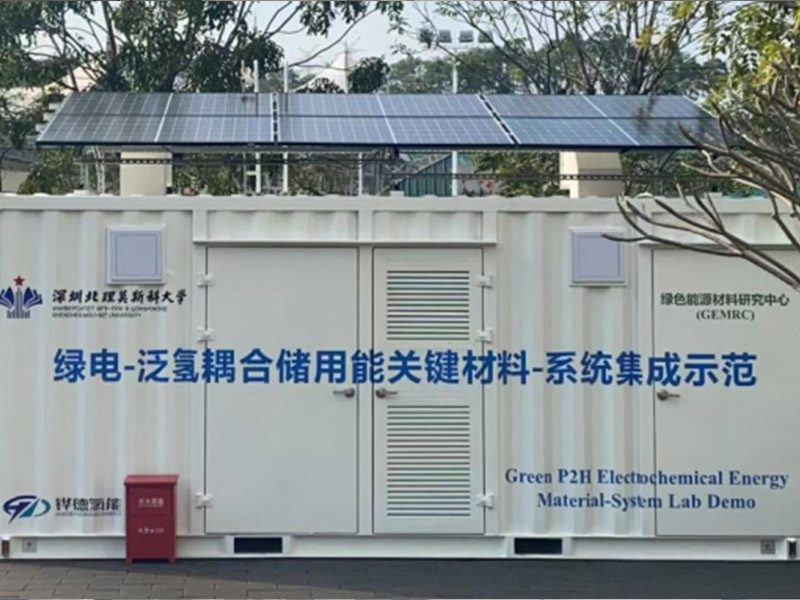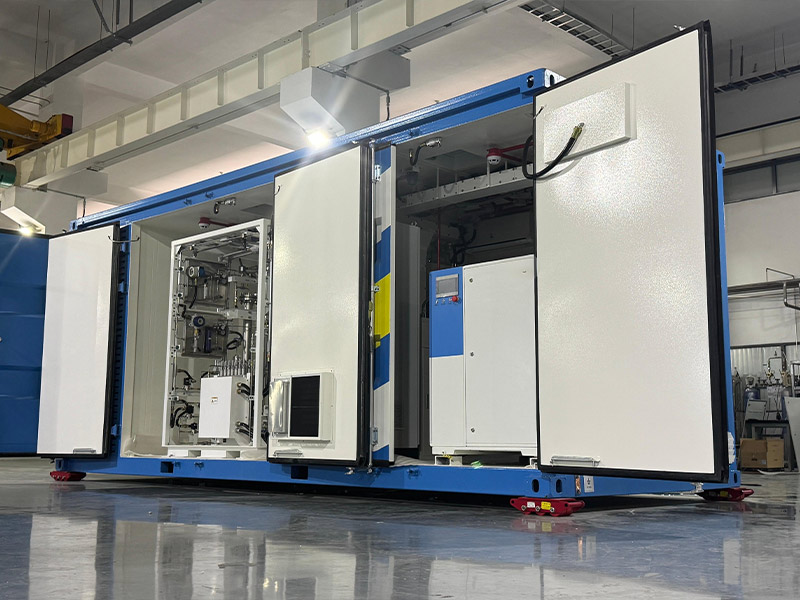As the world races toward cleaner, more sustainable energy solutions, one powerful combination is emerging as a true game changer: solar hydrogen. By merging the renewable power of the sun with the storage capabilities of hydrogen, this innovative energy model offers a path to carbon-free living, reliable off-grid independence, and long-term sustainability.
Keypoints
l Solar hydrogen combines renewable solar power with clean hydrogen production, using electrolysis to split water into hydrogen fuel with zero carbon emissions.
l It solves renewable energy’s intermittency problem by storing excess solar power as hydrogen for months or even years, outperforming batteries in longevity and energy density.
l Solar hydrogen enables true energy independence, powering homes, vehicles, and industries without reliance on fossil fuels or the grid.
l The system is highly versatile, providing both electricity and heat for households, transportation, and industrial applications while reducing energy bills.
l A sustainable alternative with global potential, solar hydrogen supports climate goals by eliminating greenhouse gas emissions and empowering off-grid communities.
Let’s explore why solar hydrogen is revolutionizing the way we think about sustainable living.
Solar hydrogen refers to the process of using solar energy to generate hydrogen fuel through electrolysis. During this process, electricity produced by solar panels splits water into hydrogen and oxygen. The hydrogen can then be stored and used later in fuel cells to generate electricity and heat, with water vapor as the only byproduct.
This system bridges the gap between intermittent solar energy and the need for continuous, round-the-clock power.
Sustainable living is not just about reducing electricity usage—it's about creating a self-sufficient lifestyle that’s both environmentally friendly and resilient. Solar hydrogen plays a crucial role in this vision by providing clean, reliable energy for households, vehicles, and even entire communities.
Here are the core reasons why solar hydrogen is making such a significant impact:
Solar hydrogen represents the pinnacle of clean energy. Unlike fossil fuels—which release CO₂, methane, and other pollutants—hydrogen produced via solar-powered electrolysis has no carbon footprint.
How It Achieves True Zero Emissions:
Solar-powered electrolysis uses only water and sunlight, eliminating reliance on natural gas (which is used in conventional "gray hydrogen" production).
Fuel cells convert hydrogen back into electricity with only water vapor as a byproduct—no smog, no particulates, no greenhouse gases.
Lifecycle analysis shows solar hydrogen is cleaner than batteries when accounting for mining and manufacturing impacts.
One of renewable energy’s biggest challenges is intermittency. Solar hydrogen solves this by acting as a long-term, high-capacity energy bank.
Why Hydrogen Storage Outperforms Batteries:
|
Factor |
Lithium Batteries |
Solar Hydrogen |
|
Storage Duration |
Days to weeks |
Months to years |
|
Energy Density |
~0.2 kWh/kg |
~33 kWh/kg |
|
Degradation |
Loses capacity over time |
No capacity loss |
Applications:
Seasonal storage: Store summer solar energy for winter use.
Grid stability: Hydrogen can balance supply/demand fluctuations better than battery-only systems.
Solar hydrogen enables true energy self-sufficiency, breaking reliance on volatile fossil fuel markets.
For Households:
Off-grid homes can run entirely on solar panels + hydrogen storage, eliminating diesel generators.
No more blackouts—hydrogen fuel cells provide backup power during extended cloudy periods.
For Nations:
Sun-rich countries (e.g., Australia, Chile) can export green hydrogen instead of importing oil.
Reduces geopolitical risks tied to oil/gas supply chains.
Unlike batteries, solar hydrogen systems provide both electricity and thermal energy, maximizing efficiency.
How It Works:
Electricity: Fuel cells generate power for appliances, EVs, etc.
Heat: Waste heat from fuel cells can warm homes or water (80%+ total system efficiency).
Perfect For:
Cold climates where heating demands are high.
Industries needing both power and process heat (e.g., food processing).
Solar hydrogen isn’t limited to power grids—it’s transforming multiple industries:
Transportation:
Cars/Trucks: Toyota Mirai and Hyundai NEXO already run on hydrogen.
Shipping & Aviation: Hydrogen-powered ships and planes are in development (e.g., Airbus ZEROe).
Agriculture: Hydrogen fertilizers can replace CO₂-intensive ammonia production.
Urban Development: Japan’s Hydrogen Towns use H₂ for electricity, heating, and public transport.
With solar panels on your roof and a hydrogen system at home, you can make your own electricity. On sunny days, the solar panels produce green energy for your lights, appliances, and even your electric car. Extra energy can be used to make hydrogen, which you can store and use later—like during the night or on cloudy days. This means fewer electricity bills and less worry about rising energy prices.
We all know how frustrating power outages can be. Whether it’s a storm, a heat wave, or a power grid problem, losing electricity is inconvenient and sometimes even dangerous. A solar hydrogen system can keep your home running even during blackouts. The stored hydrogen becomes your backup power source, keeping your fridge cold, your lights on, and your phone charged.
Solar hydrogen systems don’t release carbon dioxide or other greenhouse gases. That means you're helping to fight climate change just by powering your home or car. It’s a great way to reduce your carbon footprint without changing your entire lifestyle.
Unlike noisy generators, solar hydrogen systems are very quiet. They work in the background without disturbing your day. Once the system is set up, it doesn’t need a lot of attention—just basic checks from time to time.
If you live in a place where the power grid doesn’t reach—or if you just want to live more independently—solar hydrogen can be a perfect solution. It gives you energy freedom without polluting the environment.
Solar hydrogen may sound like something from the future, but it's already changing the way we live today. It's clean, quiet, and smart—helping families save money, avoid blackouts, and reduce their impact on the planet. Whether you live in a city, a small town, or off the grid, solar hydrogen offers a simple way to enjoy reliable energy while protecting the environment. As technology becomes more affordable and available, more people will be able to enjoy the freedom and peace of mind that solar hydrogen brings. A better, cleaner future really does start at home.
Solar hydrogen is hydrogen gas made using solar power. Solar panels create electricity, which splits water into hydrogen and oxygen. The hydrogen is stored and later used to produce clean electricity with no pollution.
Traditional hydrogen (called "gray hydrogen") is usually made from fossil fuels, which causes pollution. Solar hydrogen is made using sunlight and water, producing no harmful emissions—only clean energy and water vapor.
Yes. With enough solar panels and hydrogen storage, a home can run completely off-grid. It provides electricity during the day and stores hydrogen to use at night or during cloudy days.
Yes. When handled properly, hydrogen is very safe. It’s used in many industries and has strict safety guidelines, just like natural gas or propane.
Prices can vary depending on system size and location, but costs are coming down quickly. Government incentives and energy bill savings help make it more affordable over time.
Yes. Some cars run directly on hydrogen fuel cells, while others (like EVs) can be charged with electricity produced from a solar hydrogen system.
You can save money on energy bills, avoid blackouts, breathe cleaner air, and reduce your carbon footprint—all while using reliable, renewable energy.


